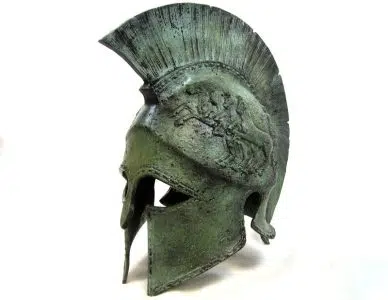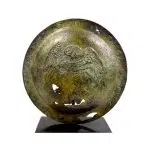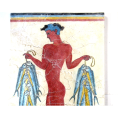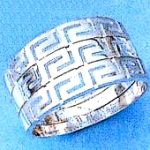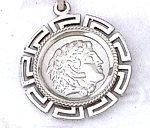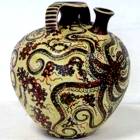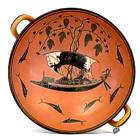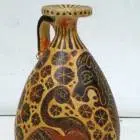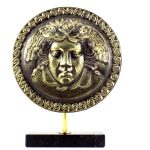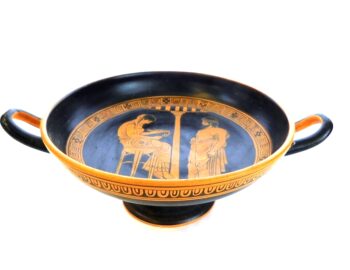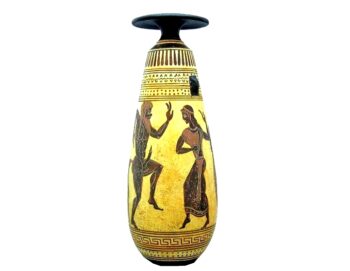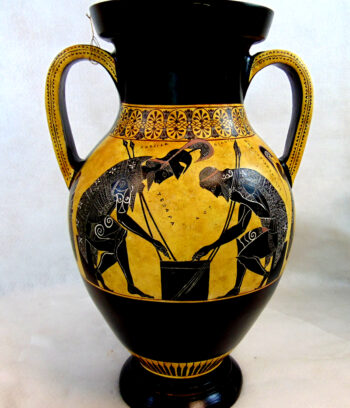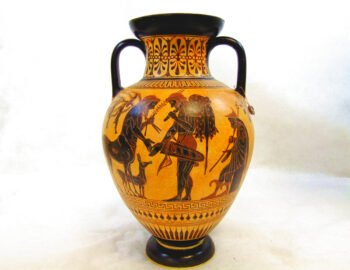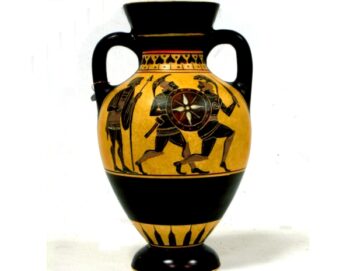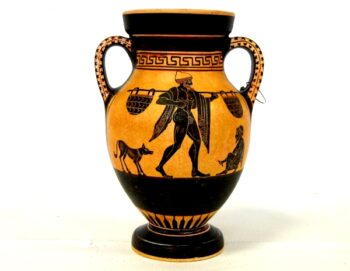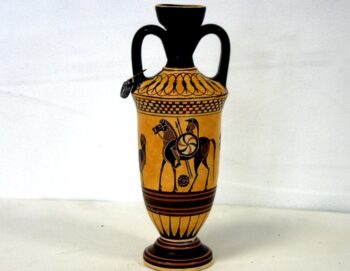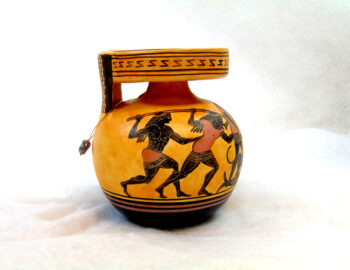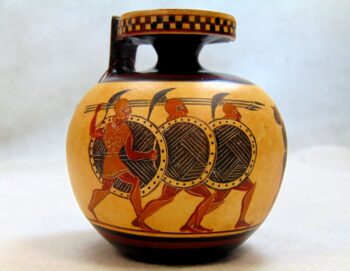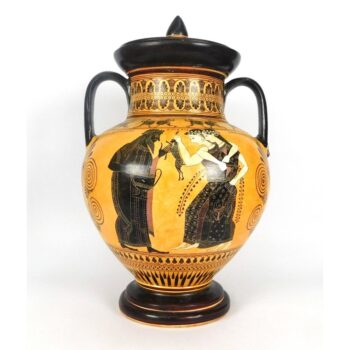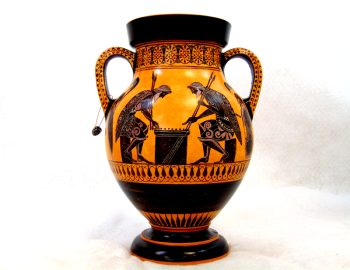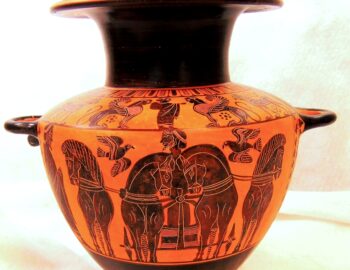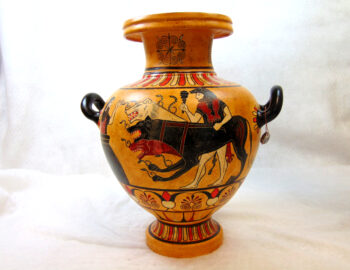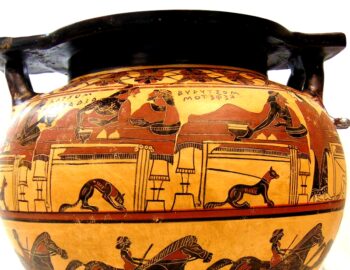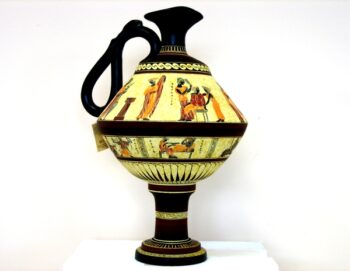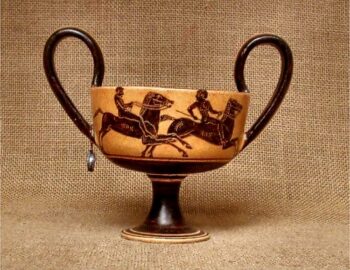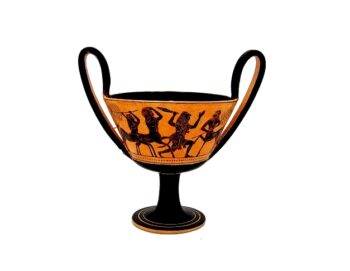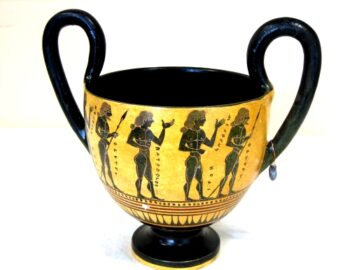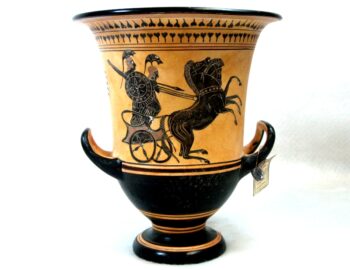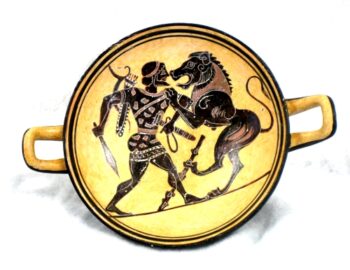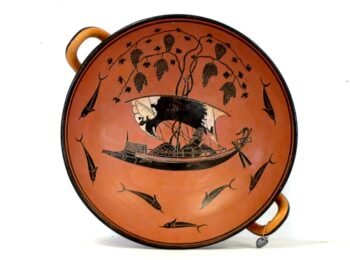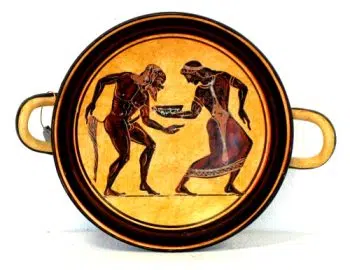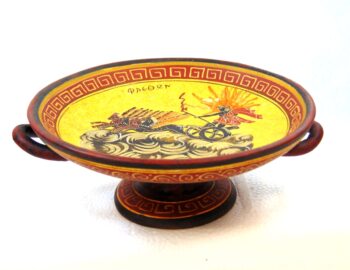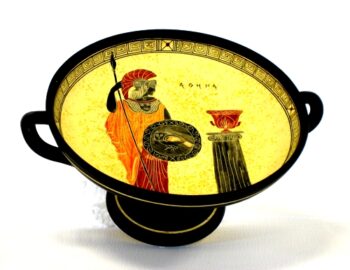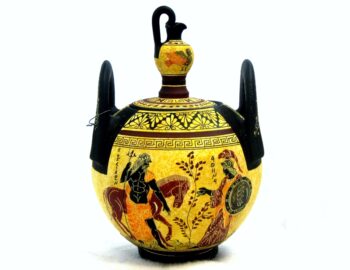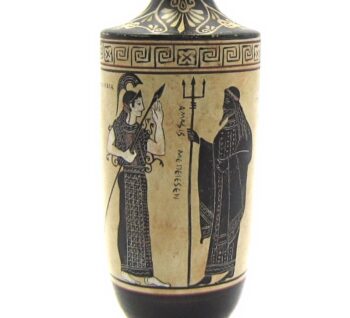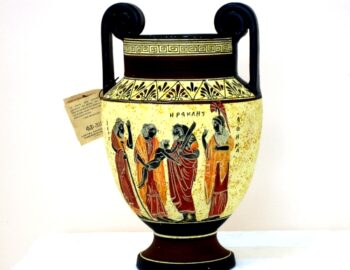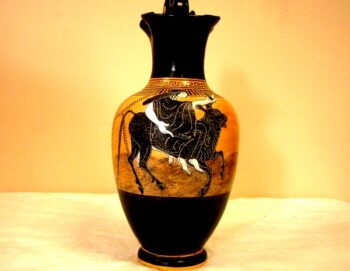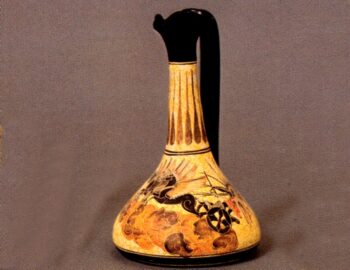This website uses cookies so that we can provide you with the best user experience possible. Cookie information is stored in your browser and performs functions such as recognising you when you return to our website and helping our team to understand which sections of the website you find most interesting and useful.
The history of ancient Greek pottery is a long and rich one. The making of pottery, that is the creation of utensils from fired clay, is one of man’s oldest and most widespread crafts. All manner of things could be stored in pottery, both wet and dry, food could be prepared and cooked in it, and people could eat and drink from it. For all of antiquity and, indeed, right up until the twenty first century of οur own era, it has been the all-purpose material.
Ancient Greek pottery has its roots in the Greek peninsula, where the craft of pottery-making goes back as early as about 6000 B.C. Once Neolithic potters could achieve a smooth surface, they soon began to experiment with painted decoration as well as the use of clay slips. It was, however, only in about 2000 BCE, at the start of the Middle Bronze Age, that potters first regularly used a fast-rotating wheel, a radical advance in ancient Greek pottery technology that enabled them to articulate the clay in a much more sophisticated manner.
The role of Minoan and Cretan influence in the evolution of ancient Greek Pottery
The employment of the fast wheel coincides with the development of a palace-based society, especially on Crete, and it is therefore quite plausible to assume that palace patronage gave a particular stimulus to this technological advance in ancient Greek pottery. Ιt is also to this time that the earliest preserved examples of clay potters' discs belong.
Ancient Greek pottery production, however, was not completely under palace control, for there were also many rural centers of production. During the Middle Bronze Age, the main place of change and development was set on Crete with the creation of the first palaces.
Minoan, that is Cretan, influence on pottery perhaps first permeated the mainland from the Cretan colony of Cythera via Laconia. The art style and craftsmanship of Minoan pottery was adopted in the Argolid, the growing center of power in southern Greece, but it also spread to coastal Attica, appearing alongside the traditional matte-painted Middle Helladic wares.
The growth of pottery in Athens and other Helladic regions
Athens itself, situated inland, seems to have been rather introverted. The gradual rise in wealth on the mainland around the mίddle of the second millennium BCE is well exemplified by the finds in the Shaft Graves at Mycenae and the square-built tomb at Peristeria in Messenia.
This growing prosperity may have been the result of various factors, including the intensification of trade with Crete, the Cyclades, and Anatolia, but in Attica the exploitation of the metal resources (lead, silver, and copper) at Laurion in southern Attica probably also played a role in the growth of ancient Greek pottery production. Following the destruction of the palaces on Crete in about 1460 B.C., the island's influence on the mainland was greatly reduced; indeed, the current began to turn in the opposite direction.
In Athens there was a consequent growth in the art and craftsmanship of ancient Greek pottery. Ιmpοrted pottery and local imitations are discernible. Ιn addition, there developed during this period a wheel-made hard-fired pottery coated οnly with an orange wash that was then burnished to a high luster (Acropolis Burnished Ware), one of the most recognizable elements of ancient Greek pottery. This local fabric has been found right across Attica, as well as on the island of Ceos and at Corinth. It belongs to the second half of the fifteenth century BCE and the early part of the fourteenth century.
Discover more about Ancient Greece and its long history from the website of the greek art shop of Hellenic Art.
